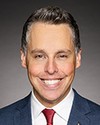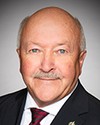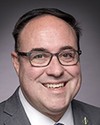Thank you to the witnesses.
I want to follow up on that, Mr. Sparling.
We just came off of a study for the more southern routes and the major airlines. It talked about some of the reasons that Lynx Air and some others have failed on some of the more traditional routes of Vancouver, Toronto, etc. That was their bread and butter, and they couldn't make it work. We heard about fees. We heard about the regulatory environment.
I know that both of the northern airlines mentioned reconsidering the user-pay model. We know that the Government of Canada heavily subsidizes some modes of transport. I just read an article this morning about the Canadian, the Vancouver-to-Toronto train. It subsidizes the passengers at about $1,000 per passenger for what can only be described as tourist travel. No one's travelling that route for business or for essential services, I would argue.
How do you feel the government should treat the different modes of transport between, say, rail in the south and air in the north?
You said that they should reconsider the user-pay model. What exactly are you looking for there?




